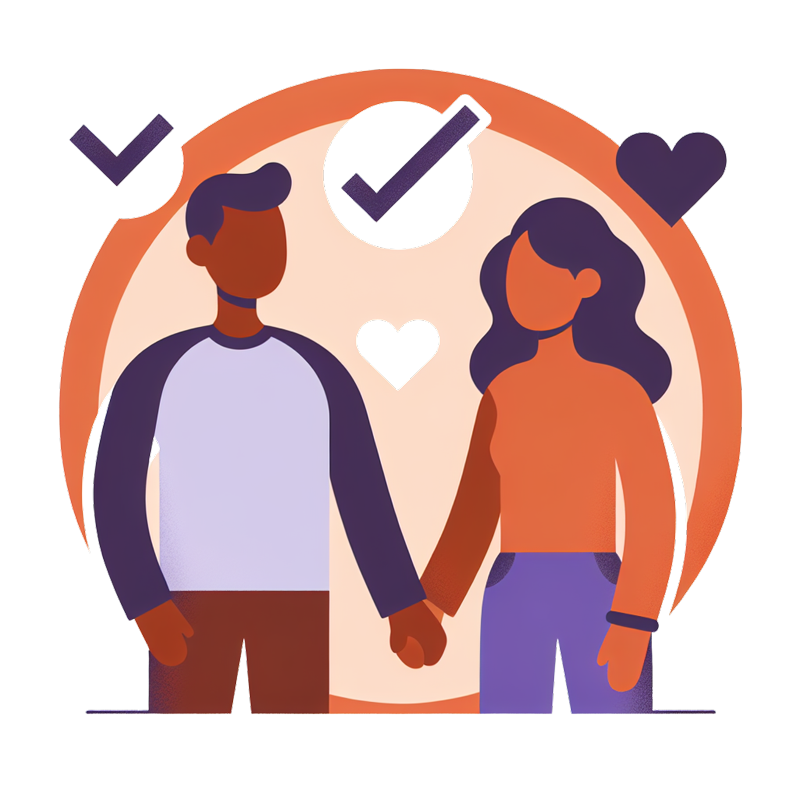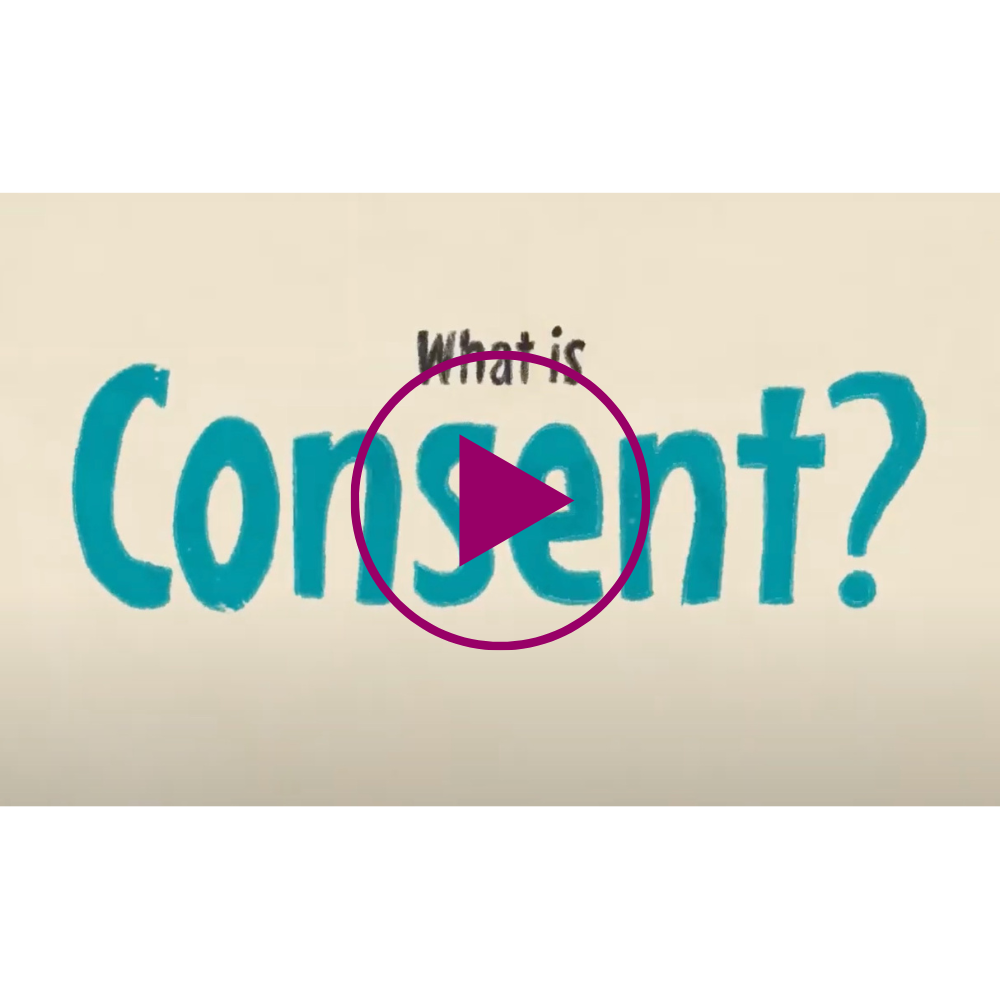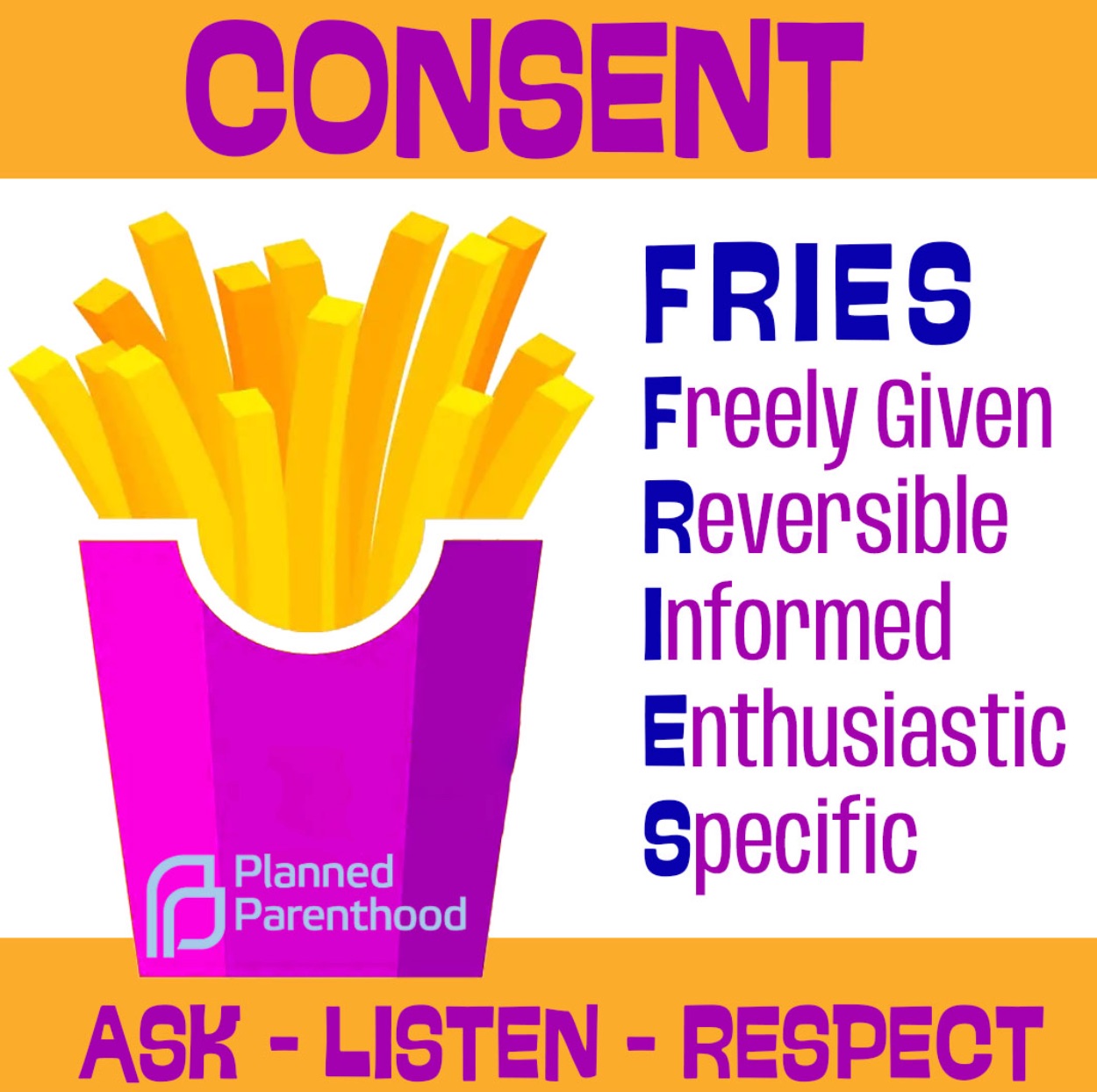Building a Culture of Consent
Clarifying the concept of consent and its importance in building healthy relationships.


What is Consent?
Affirmative, conscious, and voluntary agreement to engage in sexual activity.
Clear with Ongoing Communication
Consent is a continuous agreement between partners about what they do and don’t want. It’s a safe, open dialogue about activities you both enjoy and feel comfortable with.
Every Encounter Requires Consent
In a healthy relationship, you always have the right to set and adjust your boundaries based on what you’re comfortable with in the moment
Consent is not assumed as a given just because of a past or existing relationship.
What Consent is Not:
Your Relationship Status Isn’t Consent
Whether it’s the first time or the hundredth, a casual or committed relationship, nobody is ever obligated to give consent, even if you’ve done so before. You are the only one with ownership of your body.
A Free Pass
Saying yes to one act doesn’t imply your consent to others and every act of physical intimacy requires its own consent. If you feel uncomfortable in the moment, you always have the right to stop, even if you previously agreed.
Implied Consent
Flirting with someone, talking to them, or the absence of ‘no’ are not consent. Consent only happens when all parties voluntarily, explicitly, and enthusiastically agree.


If anyone feels uncomfortable or non-consensual, it’s crucial to stop
Fear or Pressure are Red Flags
It’s not consent if you’re afraid or unable to say no, or manipulated, pressured, or threatened to say yes. It’s not consent if you or your partner are unable to give consent, including if you’re asleep, unconscious, or under the influence of substances like alcohol, some prescription medications, and other drugs.
Non-Consent Means Stop
You Can Change Your Mind
Consent Starts Early
We should start talking about consent with our children when they are young. Consent is important for kids to learn about from an early age. It can lead to better relationships with family, friends, peers and, eventually, romantic partners. Here are some of our favorite resources:

